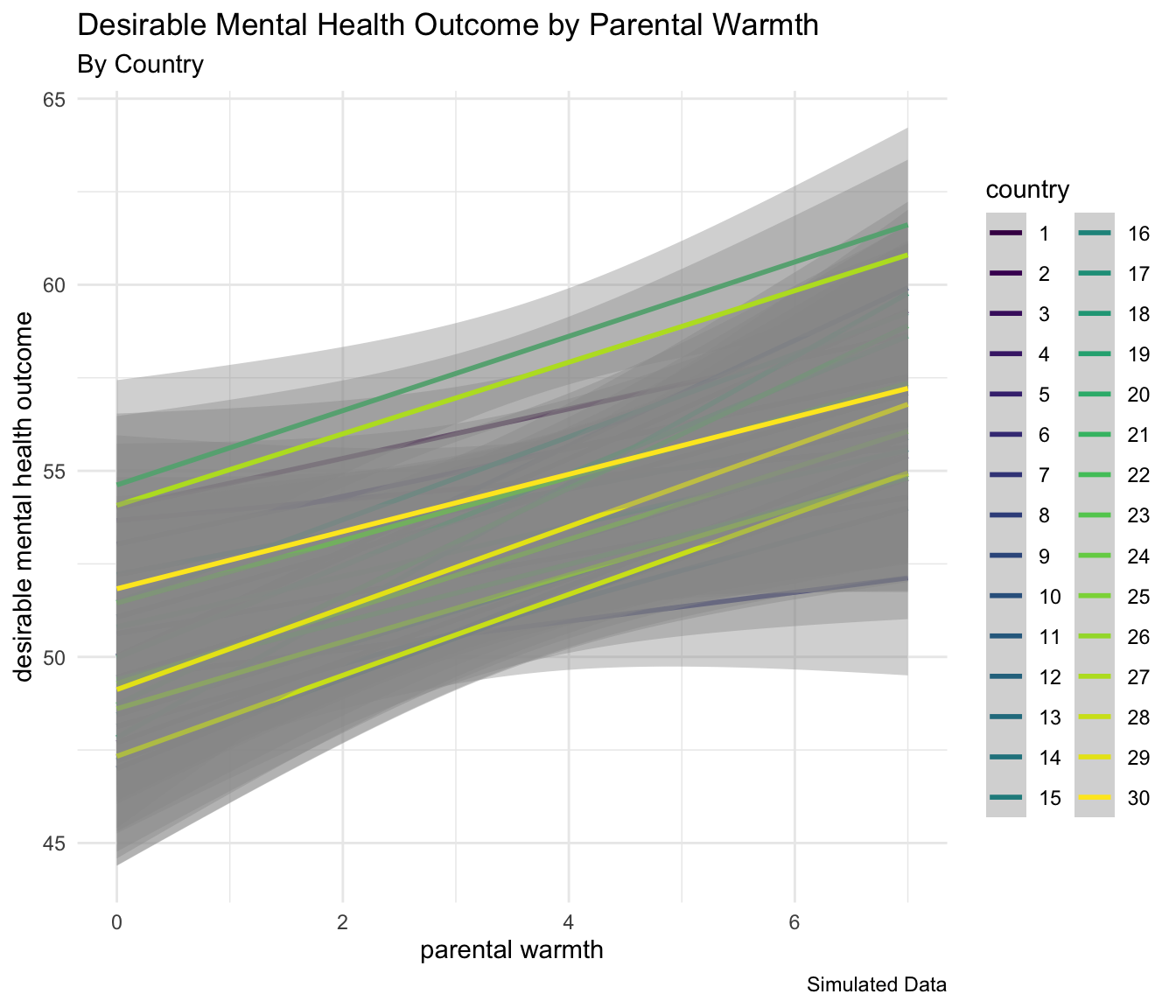
3 Simulated Multi-Country (Multilevel) Data

“… the particular and the universal are not to be seen as opposites, … the universal is not the negation of the particular but is reached by a deeper exploration of the particular.” (Cesaire in UNESCO (1997))
I use simulated data in this example. Data come from 30 hypothetical countries. Data contain measures of a few key aspects of parenting1 or caregiving that have proven salient in the empirical literature on parenting to date: parental warmth, and physical punishment. Both parenting measures are normally distributed variables, and are considered to be Level 1, or individual level variables. group is a hypothetical–and somewhat arbitrary–group designation that could hypothetically refer to something like different economic groups, or groups from different parts of the country. group is also a Level 1 variable.
HDI is a measure of the Human Development Index (United Nations Development Program, 2022), and is measured at the country level, or Level 2. (I discuss more in depth thinking about levels of the data in Chapter 5.)
Our outcome is conceptualized as a positive mental health outcome or behavioral outcome, and higher levels of outcome are considered to be better. Statistically, the data are clustered within countries.
In this simulation, I construct the data so that warmth is positively related to the outcome, while physical punishment is negatively related to the outcome.
| id | country | warmth | physical_punishment | group | HDI | outcome |
|---|---|---|---|---|---|---|
| 1.1 | 1 | 3 | 2 | 2 | 69 | 59.18 |
| 1.2 | 1 | 0 | 4 | 2 | 69 | 61.54 |
| 1.3 | 1 | 4 | 4 | 1 | 69 | 51.87 |
| 1.4 | 1 | 6 | 0 | 2 | 69 | 51.71 |
| 1.5 | 1 | 2 | 3 | 2 | 69 | 55.88 |
| 1.6 | 1 | 3 | 5 | 1 | 69 | 60.78 |

I use the term parenting throughout this document, but am aware that such parenting may come from biological parents, or from other caregivers.↩︎